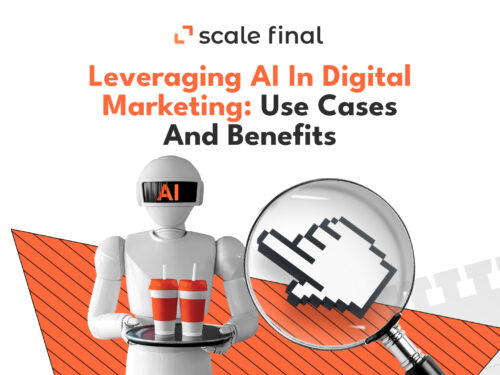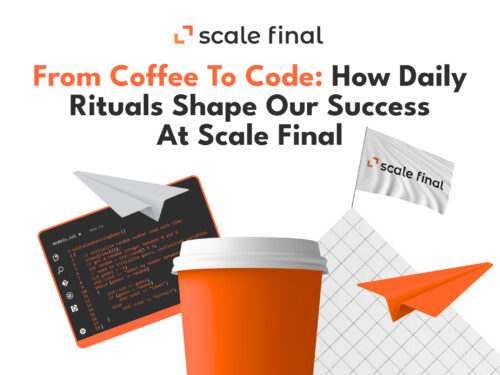Home • Blog • Leveraging AI eye tracking for effective marketing: what you need to know
Leveraging AI eye tracking for effective marketing: what you need to know
We’ve said many times that you shouldn’t rely on your intuition in marketing matters. For example, in matters of design, testing, launch, etc. We’ve said that you should always rely on data.
How to collect and analyze it, you’ll learn here: CRO From Scratch. Part 1
But what if you’re at the very, very beginning and want to make it super cool right away? How can you beat the competition? How do you make sure you don’t lose the already limited attention of your visitors?
In Neuromarketing is gold? (spoiler: the answer to this question is no) we wrote about cool but complex behavioral studies, including eye tracking. Why it’s cool, but still complex, later.
You’re probably here for a reason. Because we also use AI eye tracking in our CRO reports. Not only do we benefit from this, because our arguments are supported by predictive analytics, but so do you.
It saves you a lot of money and time. Not only time for hypothesis testing, not only for testers, but time for the whole product cycle and for the whole team.
In this text you’ll learn:
- What is traditional eye tracking?
- What are the pros and cons of traditional eye tracking?
- What is AI eye tracking?
- How does AI eye tracking work?
- What are pros and cons of AI eye tracking?
- How can you leverage AI eye tracking?
What is traditional eye tracking?
Eye tracking studies are traditionally held in a lab-like setting to measure eye movements. They were first used by neuroscientists and then adopted by neuromarketers and marketers in general.
These studies can predict fixation points and even the order of eye movements. Respectively, you can also determine what’s getting little or no attention.
In most of these studies, you need a lot of subjects to get reliable data and special equipment. Screen-based trackers observe eye movement relative to a flat display. Wearable trackers, such as eye-tracking glasses and VR headsets, are used in more active or real-world scenarios. Webcam-based solutions are a cost-effective alternative but may be less accurate.

Another key concept in eye tracking is heatmaps – color-coded summaries of gaze points. Red typically represents the most viewed areas, while green represents the less viewed. These visualizations help make sense of the vast data collected in eye tracking studies.

What are the pros and cons of traditional eye tracking?
- Accurate data – > data-driven decision-making
It gives you data on what’s attracting attention, and that takes the guesswork from all phases of product development.
- Expensive equipment
Some of the equipment can cost up to $10,000, and that’s just the middle-end equipment. However, the device you need depends a lot on the industry you’re working in. Assuming you’re a digital marketer, the equipment itself will cost you an average of $1,000. Then you have to keep in mind that at least 39 users should participate in the study. So you need to multiply each number by 39.
- Time-consuming
You can buy these studies as a service from special companies, for example, Eye Square. But to get the result you still need a lot of time, because one test takes up to 60 minutes.
What is AI eye tracking?
The amount of data collected during the years of traditional eye tracking hasn’t disappeared into oblivion. All that data was fed into AI prediction models, and the AI eye tracking tool was born.
Predictive AI eye tracking simulates human vision. AI heatmaps like the real ones show which areas of visual elements people prefer to look at and which they don’t.
On average, it simulates the first 3-5 seconds of user attention. Just like traditional eye trackers, it determines whether the visual hierarchy is clear, which elements attract attention, and how the gaze moves between them. The AI Eye Tracker can predict the real user’s attention with 90-95% accuracy, which is quite impressive considering that the study takes only minutes and costs far less money.
Discover more AI tools here: Conversion intelligence: AI for CRO

This is exactly what our tool, ScaleFinal eye tracking does. We use it extensively in our CRO reports to help businesses increase their conversion rates by changing web pages, landing etc. based on eye tracking studies. No special devices, data, or users are required.
What sets our AI tool apart is the team of professionals with diverse backgrounds in digital marketing that work on each report. We know that every business is unique. That’s why our team of SEO specialists, UX /UI designers, and CRO experts work together to tailor it to each client’s specific needs.
By leveraging all of our expertise, we ensure that eye tracking data is interpreted accurately and meaningfully for your unique context, leading to actionable recommendations that drive results.
How does AI eye tracking work?

The AI algorithm is an ever-learning, self-improving data sponge.
These sophisticated deep-learning algorithms are trained with tens of thousands of images from actual eye tracking studies.
As the AI sifts through these images, it recognizes certain patterns in how users direct their attention and neatly catalogs them. This allows the AI to make educated guesses on what will attract attention.
As you feed these algorithms more data, they get better and better at predicting where people’s eyes will go. Currently, the hit rate of academic visual saliency prediction models (a fancy term for predicting where eyes will land) is 90-95%.
What are the pros and cons of AI eye tracking?

- Fast data-driven decisions
With AI predictive modeling, the entire team can use the tool, especially in the pre- launch phase. No more wrangling and guesswork over product page blocks, lengthy data collection, web development and design.
- Money savings
AI tools are, on average, much cheaper than traditional tools. Even the agencies proposing AI eye tracking as a service charge less.
- Less accuracy
The accuracy of AI predictive eye tracking is 90-95% compared to human studies. Still, this number is quite high. Think of it as a trade-off for lower cost and less time.
- Digital marketing only
With some of the traditional eye tracker devices, you can gather a lot of different data from the real world. But if you’re reading this text, that may not be a disadvantage for you.
How can you leverage AI eye tracking?

1. Arguments for design decisions to customers
Whether you’re in marketing, advertising, CRO or web development, there will always be moments when you need to gain your clients’ trust in your decisions or point out some design issues in their current layout. Predictive eye tracking is your secret weapon in such cases, as it provides data-driven insights about user attention.
2. Pre-launch testing of websites and banners
Guarantee the visibility of important elements and ensure the clarity of your design. There are few ways to test a web design during the development phase, making AI attention heatmaps a fantastic alternative to lengthy user interviews and focus groups.
3. Competitor websites under the microscope
Since no code snippet is required, it opens up a variety of ways for you to compare your website to your competitors’. Find a competitor that is good, maybe even better than your business, and examine their website, its clarity, visibility of CTAs, and more. You may find valuable insights to improve your own website.
4. Testing websites with low traffic
If your newly launched website doesn’t have significant traffic yet, running A/B tests is challenging because it takes longer to collect enough data. This is where predictive eye tracking comes in – the traffic factor becomes irrelevant as AI heatmaps are created based on already proven data.
Find more details about a/b testing: CRO From Scratch. Part 2
5. Conversion rate optimization
Predictive eye tracking is a valuable tool to review your existing design and explore conversion rate optimization opportunities. It allows you to examine the visual hierarchy of your page and study the flow of user attention across key page elements. In addition, AI heatmaps can highlight any elements that may be drawing attention away from your CTA buttons.
If you want to optimize your site, try ScaleFinal AI eye-tracking CRO report today to revolutionize your marketing strategy. Our report will serve you as the first step CRO journey.
Author
-
 ScaleFinal Content Writer
ScaleFinal Content WriterExperienced writer in different domains. I package meaning into words and bring people together. Know how to convey the vision and values of a product in writing. I like reading, movies, sports and blockchain.
View all posts






